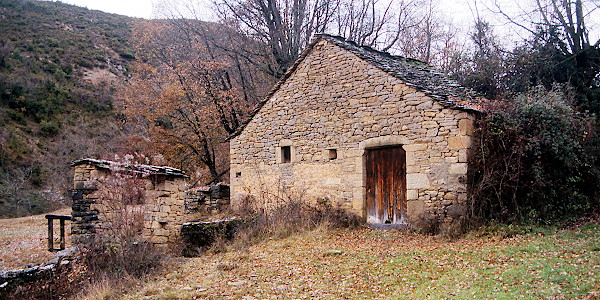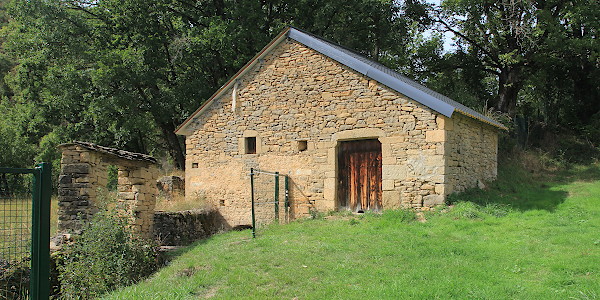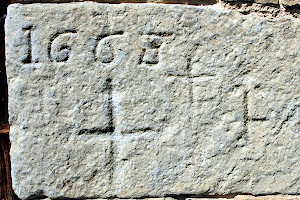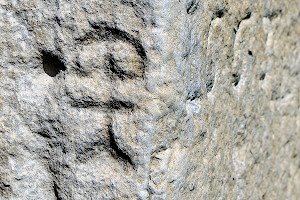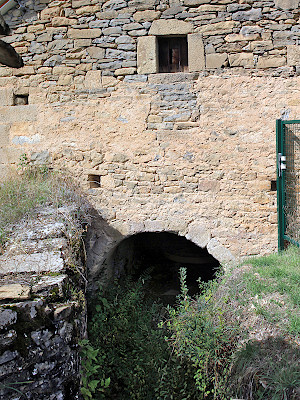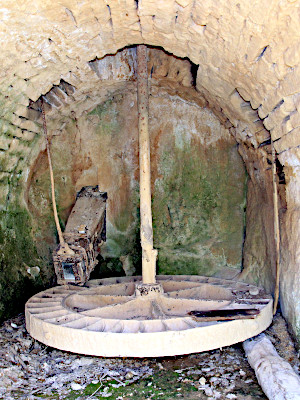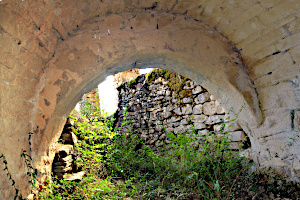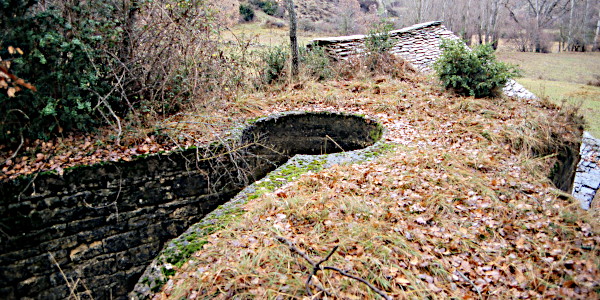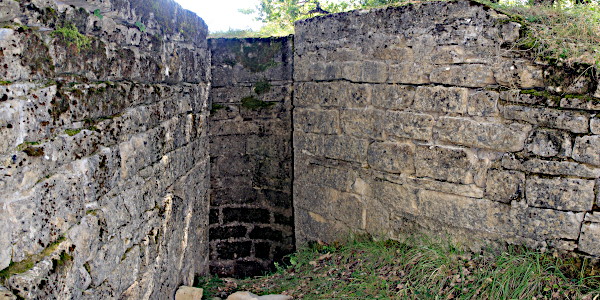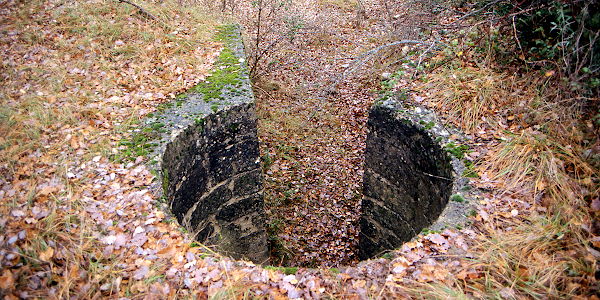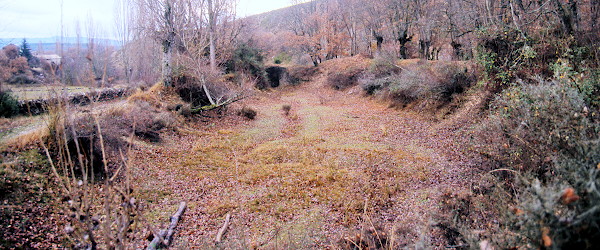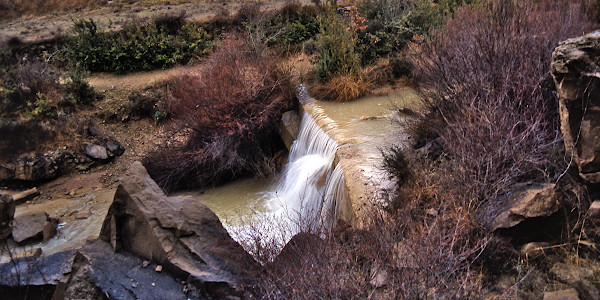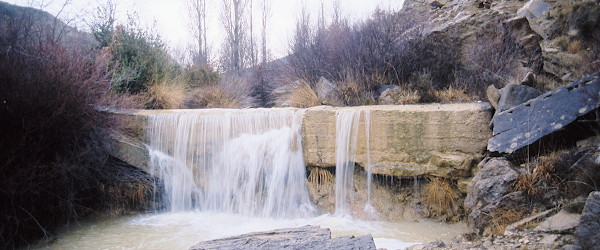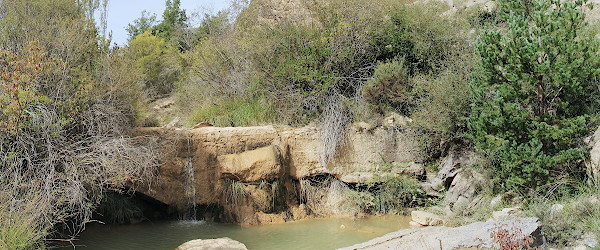Path: Introduction -
Visit the mills; catalogue - Ara

Mills in Alto Aragón — molino harinero
Ara

Ara a village not far from Jaca is easily reached
from the N-330 between Jaca and Sabiñanigo. Take the branch for (HU-V-3011), cross this village, and
continue for about 6 km on the same road until you reach a roundabout where Ara is signposted. Leave your vehicle
at the entrance of Ara, near the Centro Social or the church.
Walk to the other side of the village, to the West. Do not take any of the streets
going down into the valley. Stay more or less level, and you will soon find the mill not too far away from the village (1).
The mill is also known as
el molino de los monjes.
Pictures: 27.xii.2002; 26.ix.2021

